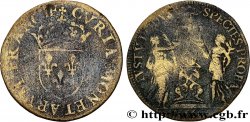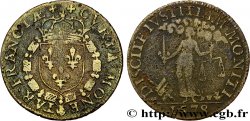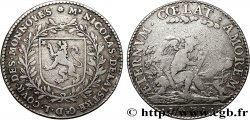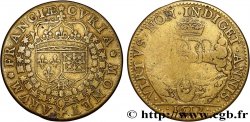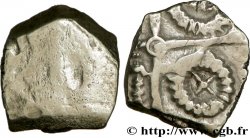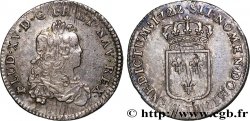fjt_708979 - COUR DES MONNAIES DE PARIS HENRI III 1580
65.00 €
Menge
In den Warenkorb

Type : HENRI III
Datum: 1580
Metall : Messing
Durchmesser : 28 mm
Stempelstellung : 6 h.
Gewicht : 4,06 g.
Rand lisse
Seltenheitsgrad : R2
Vorderseite
Titulatur der Vorderseite CURIA. MONETAR. FRANCIAE.
Beschreibung Vorderseite Écu de France couronné et entouré du collier de l'ordre de St Michel.
Übersetzung der Vorderseite (Cour des monnaies de France).
Rückseite
Titulatur der Rückseite PATET. FALLACIA. TANDEM ; À L'EXERGUE : 1580.
Beschreibung Rückseite Archimède debout à gauche, fait l'expérience de la couronne du roi Hiéron dans l'eau.
Übersetzung der Rückseite Il découvre cependant le principe du phénomène.
Kommentare
Au XVIe siècle, la Cour des monnaies de Paris fit frapper une grande diversité de jetons dont les motifs changeaient presque chaque année. L'iconographie du revers fait allusion à la découverte de l'hydrostatique par Archimède et à son fameux théorème : le roi de Syracuse, Hiéron, soupçonnant un orfèvre de lui avoir fabriqué une couronne d'or, frauduleusement alliée d'argent, demanda à Archimède de déterminer s'il y avait eu fraude sans détruire la couronne. Après maintes réflexions il trouva la solution dans sa baignoire. Le revers représente Archimède trempant la couronne de Hiéron dans une bassine afin d'en déterminer la densité.
In the 16th century, the Paris Mint minted a wide variety of tokens, the designs of which changed almost every year. The reverse iconography alludes to Archimedes' discovery of hydrostatics and his famous theorem: the king of Syracuse, Hiero, suspecting a goldsmith of having made him a gold crown, fraudulently alloyed with silver, asked Archimedes to determine whether there had been fraud without destroying the crown. After much thought, he found the solution in his bathtub. The reverse depicts Archimedes dipping Hiero's crown into a basin to determine its density.
In the 16th century, the Paris Mint minted a wide variety of tokens, the designs of which changed almost every year. The reverse iconography alludes to Archimedes' discovery of hydrostatics and his famous theorem: the king of Syracuse, Hiero, suspecting a goldsmith of having made him a gold crown, fraudulently alloyed with silver, asked Archimedes to determine whether there had been fraud without destroying the crown. After much thought, he found the solution in his bathtub. The reverse depicts Archimedes dipping Hiero's crown into a basin to determine its density.







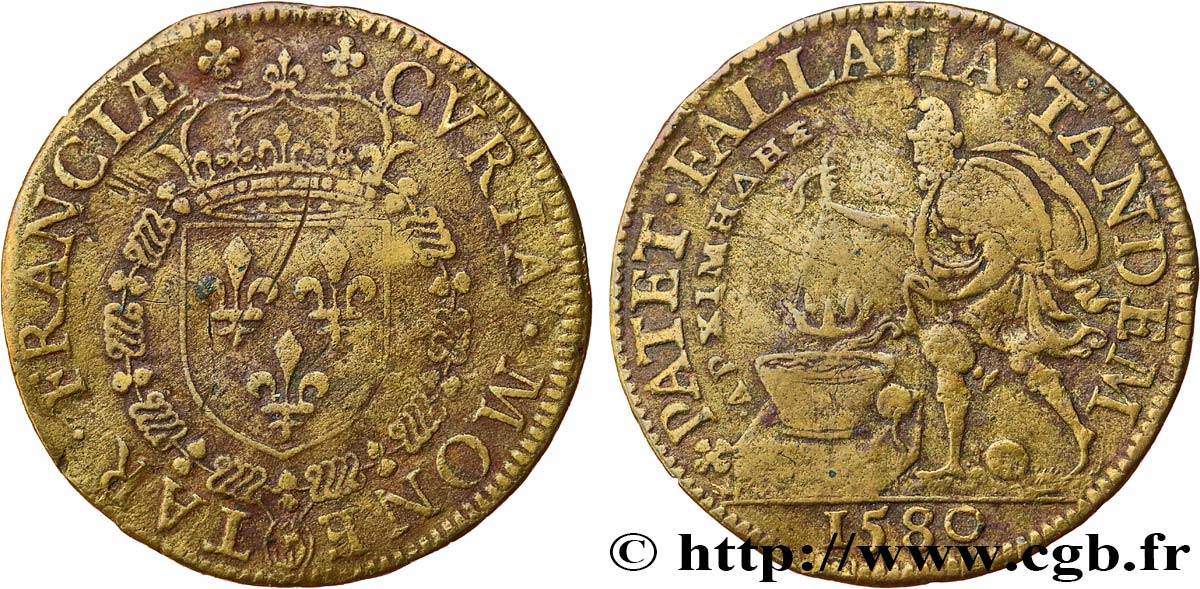
 Berichten über einen Fehler
Berichten über einen Fehler Die Seite drucken
Die Seite drucken Teilen meiner Auswahl
Teilen meiner Auswahl Stellen Sie eine Frage
Stellen Sie eine Frage Einlieferung/Verkauf
Einlieferung/Verkauf
 Details
Details
